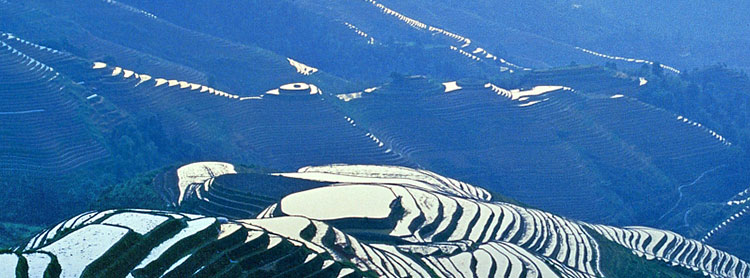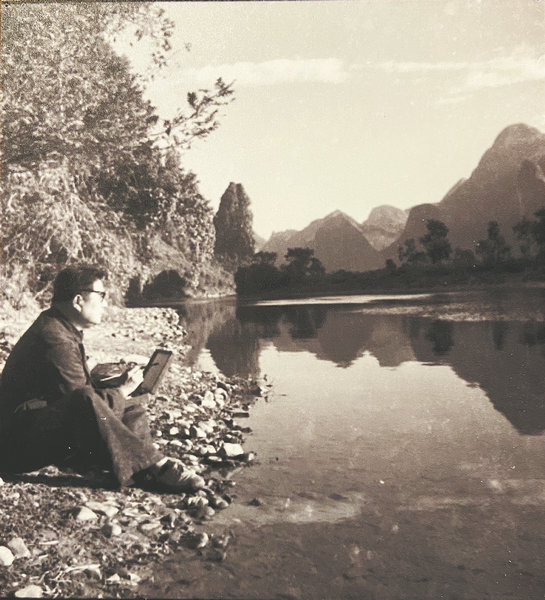
 Discover Guilin
Discover Guilin


Li Luogong (1917-92) sketching by the Lijiang River in the 1970s and painting a self-portrait in the 1950s. [Photos/CHINA DAILY]
The distinctive karst landscapes of Guilin in the Guangxi Zhuang autonomous region, particularly its unusual mountains, fascinated preeminent modern painters like Liu Haisu (1896-1994) and Wu Guanzhong (1919-2010). The jagged spires, the serene Lijiang River snaking between them, bright colors and misty atmosphere all inspired fine work.
The area also played a pivotal role in the career of Li Luogong (1917-92), who lived and worked in Guilin from the 1960s. Having gained reputation in oils, Li, who was prompted by the area's natural beauty, invested more time in jinshi (the study of ancient artifacts and inscriptions), calligraphy and the traditional art of seal engraving.
He integrated the mountains, caves and streams that he lived among into the creation of Chinese characters he engraved and wrote.
Li's oil paintings, seal art and calligraphy are on show at the Beijing Fine Art Academy at The Powerful Influence of Writing Surpasses the Physical Boundaries, an exhibition to review his artistic endeavors to bridge the past and present, China and the West, through the ups and downs of the 20th century.
Wu Hongliang, director of the Beijing Fine Art Academy, says that Li was an important "explorer" whose ventures in oil, calligraphy and seal art illustrate an eruption of vigor that ushered tradition into modernity. "Behind his work lies his courage and determination to make changes, so that his art would, in his own words, 'have the weight of a mountain'."